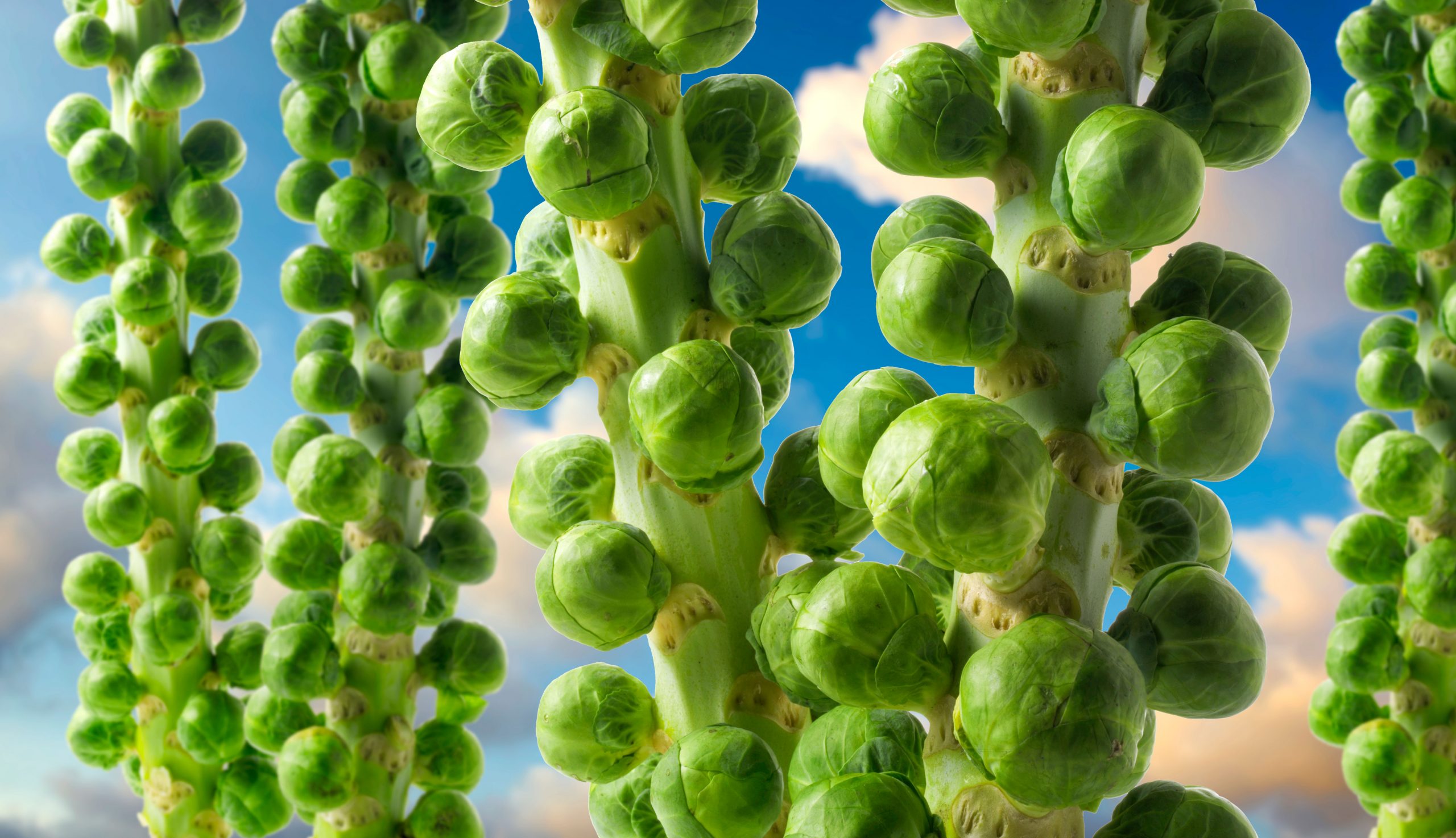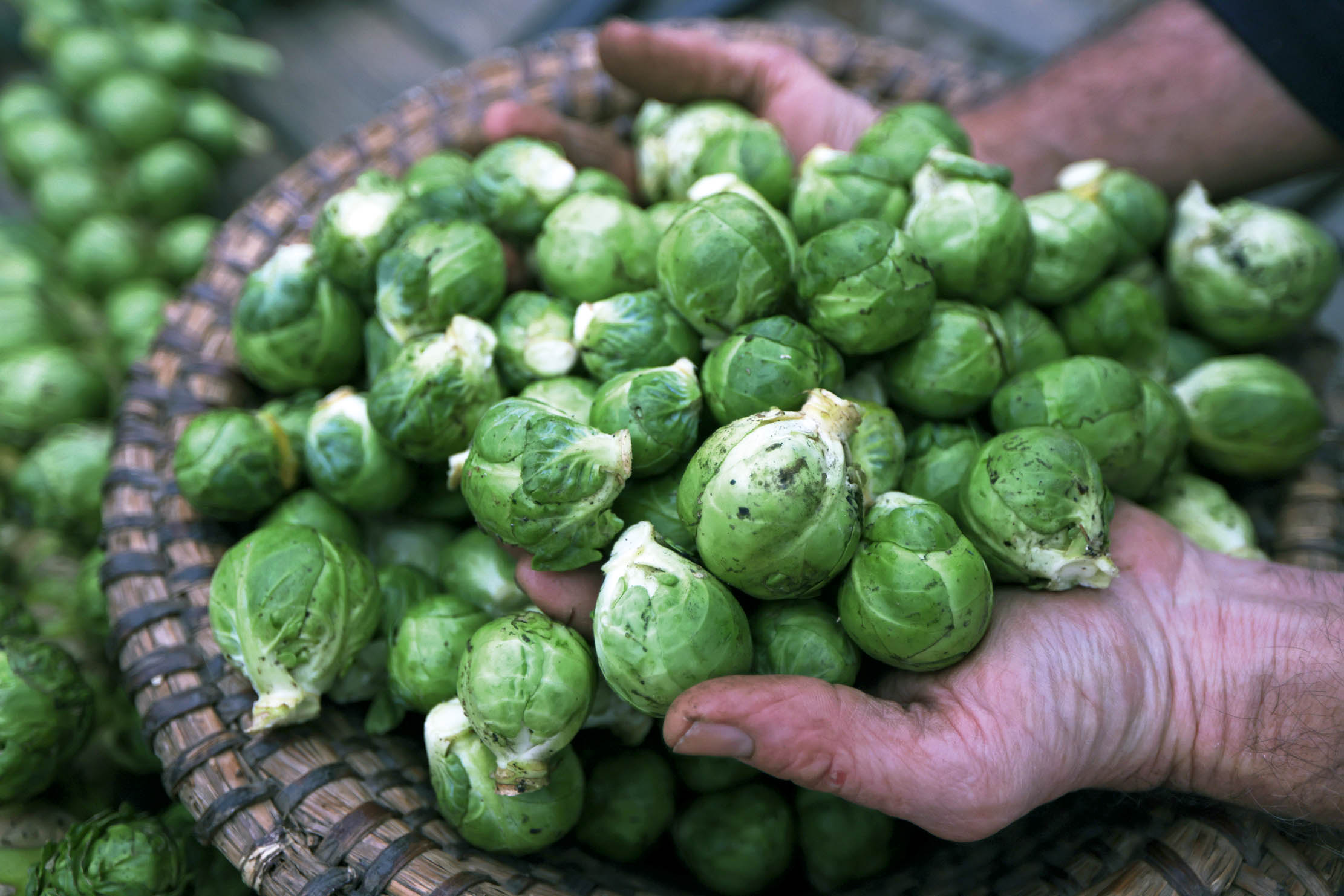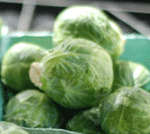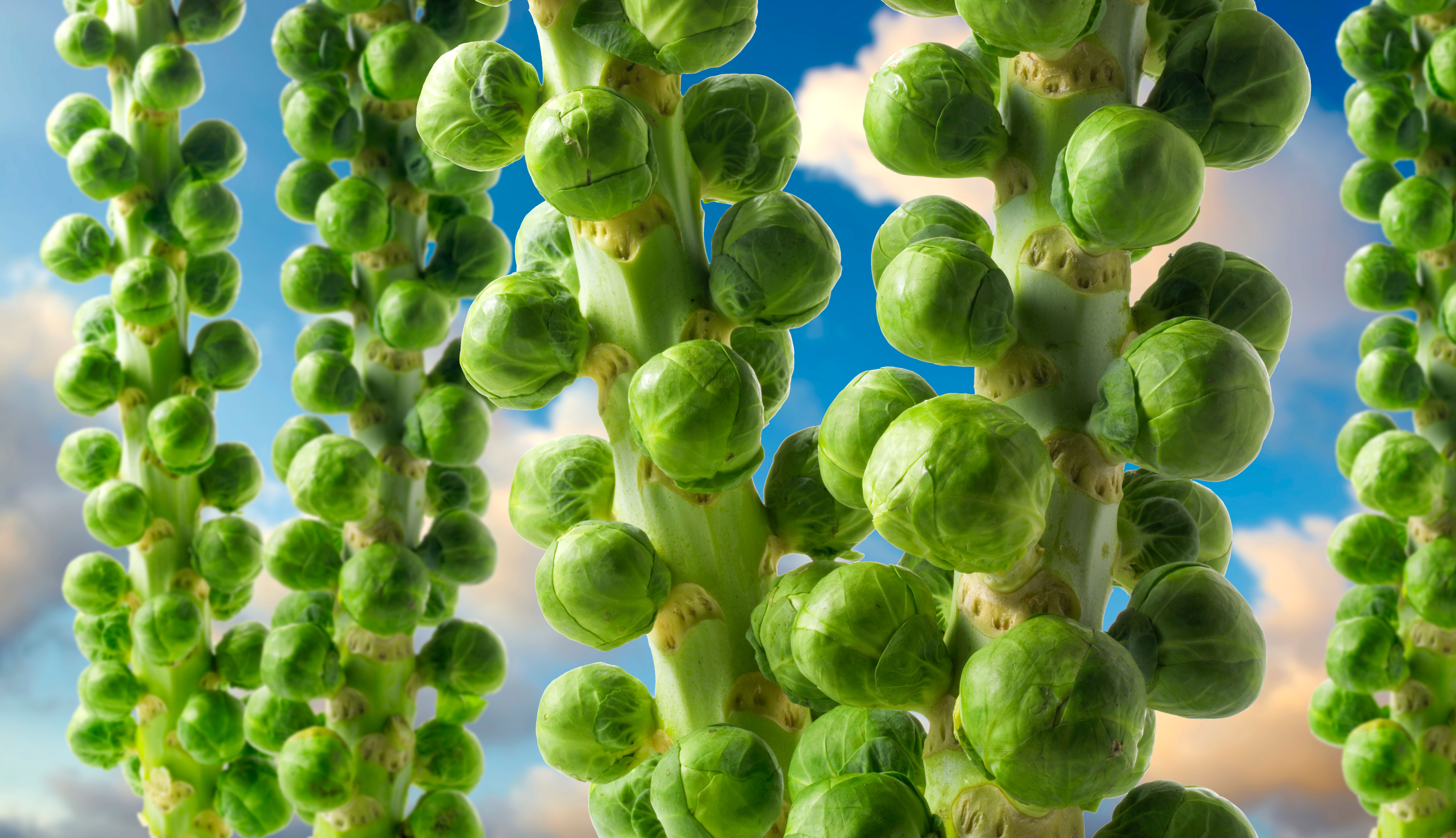Curious Questions: Do Brussels sprouts come from Brussels in Belgium?
As healthy as they are divisive, Martin Fone takes a look at the humble Brussels sprout. Why do we eat them at Christmas? Does anybody eat them during the rest of the year? And do they really come from Brussels?


They are the Marmite of the vegetable world, their presence on the Christmas dinner table likely to provoke joy or outright disgust. Containing more vitamin C than an orange and with just eighty calories in a half pound, Britons eat more of them than any other European country, around 40,000 tonnes a year — and yes, we do eat them all year round. Two-thirds of Brussels sprout consumption in the UK is outside of the festive season.
But what about that odd name? Brassica oleracea, variety gemmifera, the Brussels sprout, is a member of the mustard family, Brassicaceae, and a cultivar of the wild cabbage that’s indigenous not to northern Europe, but Afghanistan, Pakistan, and Iran. Unlike the cabbage, which grows directly from the ground, the edible part of the Brussels sprout plant, the cabbage-like buds about an inch or two in size, form in leaf axils along its tall stem.
Historians believe they were probably first cultivated and spread more widely by the Romans, but we know for certain that they were grown in Flanders and northern France from the 12th century. Mentioned in some market regulations for the Brussels area in 1213, their association with the area earned the vegetable its distinctive name. The first written description of them was provided by Dutch botanist, Rembertus Dodonaeus, in 1587.
By the 17th century sprouts had arrived in Britain, one writer describing in 1623 a cabbage plant ‘bearing some fifty heads the size of an egg’. Dorothy Hartley in Food in England (1954) cites a gardening manual from 1699 which provides instructions on cooking a vegetable very much like a Brussels sprout, for which, rather than Flanders, ‘the best seed of this plant comes from Denmark and Russia’.
Hannah Glasse also told her readers how to cook them in her The Art of Cookery Made Plain and Easy (1747). ‘Cabbage and all Sorts of young Sprouts must be boiled in a great deal of Water. When the Stalks are tender, or fall to the bottom, they are enough; then take them off before they lose their Colour…Young sprouts you send to the Table just as they are’.
These references pre-date what the Oxford English Dictionary (OED) cites as the first published reference to the Brussels sprout in English. In his A Plain and Easy Introduction to the Knowledge and Practice of Gardening (1796), the then vicar of the Blixworth in Northamptonshire, Charles Marshall, wrote that ‘Brussels sprouts are winter greens growing much like borrcole’, kale, perhaps indicating that the plants were valued more for the tuft of leaves than their sprouts.

The first recipe directly referring to Brussels sprouts appeared in Eliza Acton’s Modern Cookery for Private Families (1845). She was certainly cooking the buds, which she described as ‘at their fullest growth scarcely exceed a large walnut in size’. They were to be boiled for eight to ten minutes in salted water and served ‘upon a rather thick round of toasted bread buttered on both sides…This is the Belgian mode of dressing this excellent vegetable’. The French, she observed, served them with sauce or tossed them in a stewpan with spice of butter, pepper, salt, and veal gravy.
Exquisite houses, the beauty of Nature, and how to get the most from your life, straight to your inbox.
Sprouts were still much of a novelty well into the 19th century. However, their appearance in late autumn made them an ideal fresh vegetable for the table just as the idea of having a large feast to celebrate Christmas Day was taking root in Victorian sensibilities. They were a match made in heaven, at least for some.
In 1931, as he described in his paper, The Relationship between Chemical Constitution and Taste (Proceedings of the National Academy of Sciences (1932), Arthur Fox, a scientist at Jackson Laboratories in Wilmington, was preparing a quantity of phenylthiocarbamide (PTC) when some dust escaped into the air. His colleague, Dr Noller, complained about its foul smell but Fox could not smell anything. The duo even tasted the crystals of PTC, Noller complaining of their extreme bitterness while to Fox they were tasteless.
Possessing a curious mind, Fox set out to discover why he and Noller differed so dramatically in their response to PTC. He tested what he described as ‘a large number’ of people, discovering that the wildly differing reactions were common regardless of age, sex, and ethnicity, with most people falling into one of two categories: those who were able to taste the compound even at very low concentrations, whom he called ‘tasters’, and those who could not except in very high concentrations, ‘non tasters’ or ‘taste blind’.
Intrigued by Fox’s findings, Albert Blakeslee extended the testing to examine the minimum concentration at which PTC can be detected, finding that people’s degree of sensitivity can vary by five orders of magnitude. Blakeslee and Fox also discovered that they could predict very accurately how sensitive an individual would be to PTC by analysing how other members of their family reacted to it. In other words, PTC sensitivity could well be hereditary.
As there was little or no understanding of our genetic make-up at the time, curiously, the potential hereditary link with PTC sensitivity was used to test paternity instead. The assumption was that if father and child had different reactions to PTC, they were unlikely to be related. Of course, it is not as simple as that as the sense of taste is subjective and can be weakened by other factors such as smoking, age, and diet, leading some to speculate just how many parents and children were wrongly matched because of their sensitivity to PTC.
By the 1970s, though, scientists had advanced sufficiently in their understanding of human genetics to have identified a specific taste gene, TAS2R38, of which we have two copies. Those who inherit the gene containing two copies of the variant, AVI, are not sensitive to the bitter tastes of certain chemicals, people with one copy of AVI and another, PAV perceive some bitterness in them, while those with two copies of PAV, sometimes known as ‘super-tasters’, find them exceptionally bitter.
Recent research has shown that those with the PAV form of the gene were two and a half times more likely to eschew vegetables than those without, reporting that they found broccoli, Brussels sprouts, and cabbages were especially and unpleasantly bitter. They were also prone to react negatively to dark chocolate, coffee, and even beer, although indifferent to salt, fat, or sugar.
Brussels sprouts do not contain PTC, but, like broccoli and cabbage, have compounds called glucosinolates which have a similar mix of nitrogen, sulphur, and carbon as that found in PTC. They form part of the plant’s defence mechanism to ward of pests and diseases, just as geneticists believe that the presence of PAV in the taste gene was vital in human evolution, allowing us to more easily detect foodstuffs that were harmful. Around 30% of us still have at least one copy of the PAV variant in our TAS2R38 gene.
Instead of an expression of fussiness, turning one’s nose up at the prospect of the sweet, nutty flavour of a well-cooked sprout might well be a pre-programmed genetic response.
No such considerations worried Linus Urbanec. On November 26, 2008, the Swede broke the world record for eating the most sprouts in a minute, an incredible 31.
Impressive stuff — but you can’t help feeling sorry for whoever might have been sleeping in the same room as Linus that night. Thanks to its high concentration of the carbohydrate raffinose — which is indigestible in the gut — its reputation for causing wind is as well-founded as its reputation for being our love-hate vegetable.

How to: Make the most delicious Brussels sprouts
Kathryn reveals the secret behind the most delicious Brussels sprouts she swears you will ever eat

Credit: Alamy Stock Photo
Brussels sprouts: Fresh and nutty, sweet and savoury all at once — and a recipe to convert even non-believers
Whoever does the PR for the Brussels sprout deserves a medal, says Debora Robertson, who tries a hearty, delicious recipe.
After graduating in Classics from Trinity College Cambridge and a 38 year career in the financial services sector in the City of London, Martin Fone started blogging and writing on a freelance basis as he slipped into retirement. He has developed a fearless passion for investigating the quirks and oddities of life and discovering the answers to questions most of us never even think to ask. A voracious reader, a keen but distinctly amateur gardener, and a gin enthusiast, Martin lives with his wife in Surrey. He has written five books, the latest of which is More Curious Questions.
